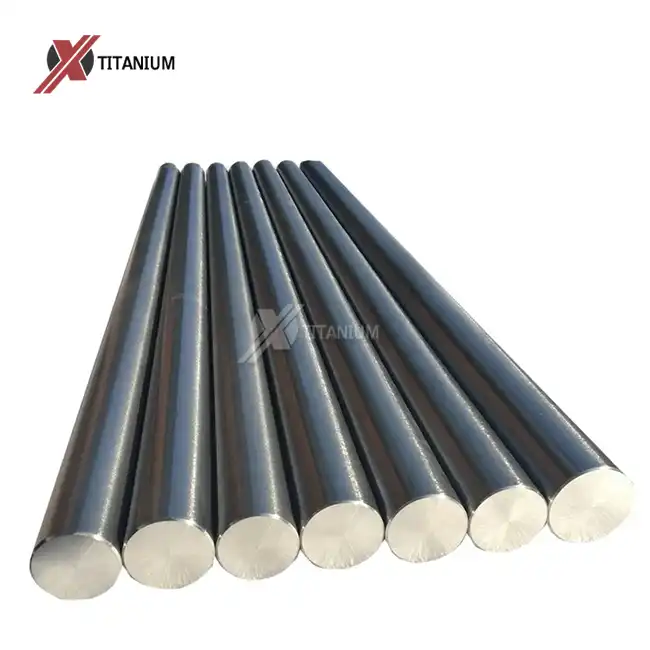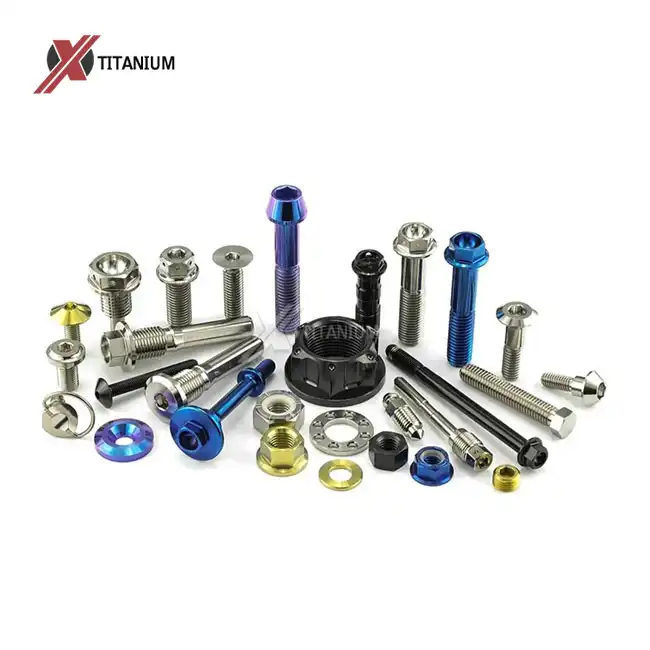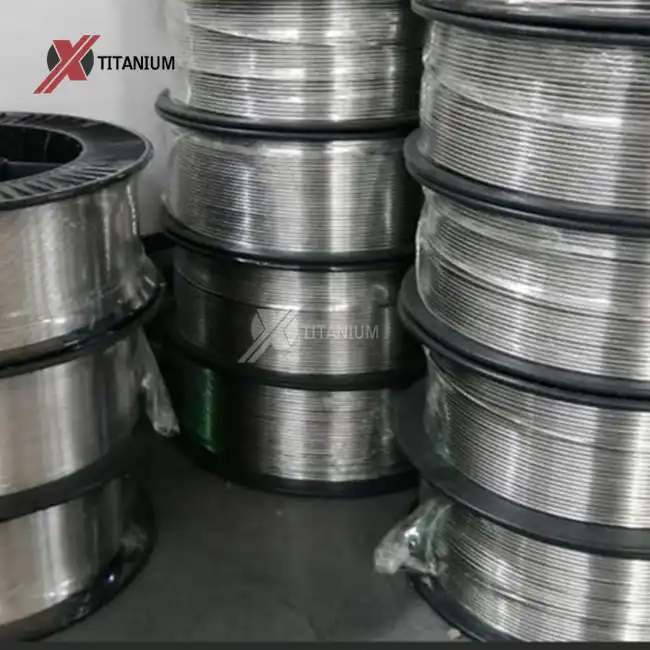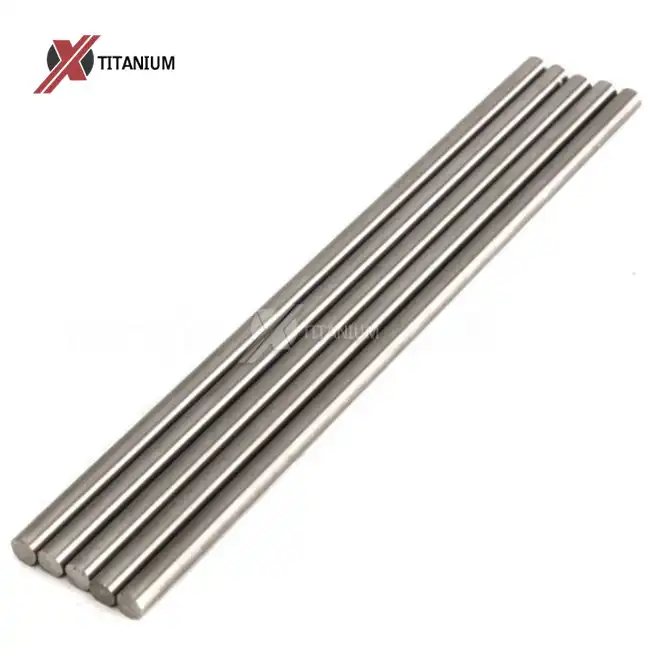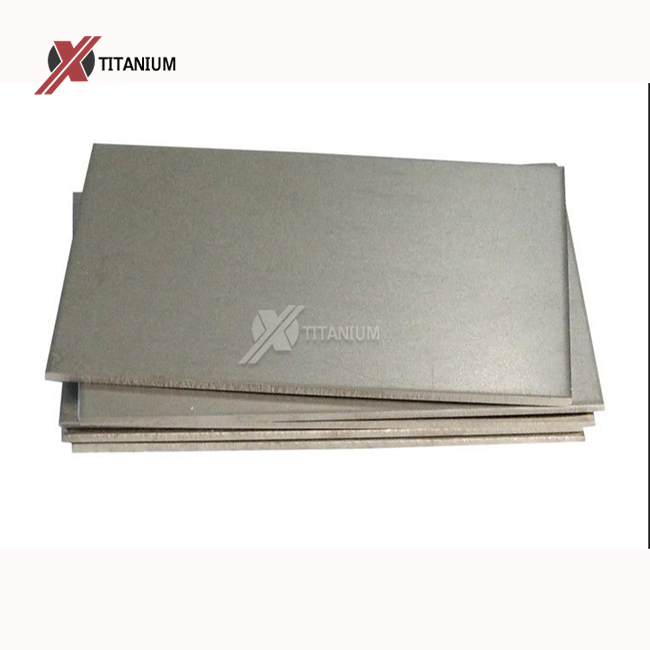Understanding the Composition and Properties of Titanium Alloy Rods
Chemical Composition of Titanium Alloys
Titanium alloy rods are crafted from a carefully engineered blend of titanium and other elements. The most common grades used for these rods are Grade 5 (Ti-6Al-4V) and Grade 9 (Ti-3Al-2.5V). Grade 5, composed of 6% aluminum, 4% vanadium, and 90% titanium, is prized for its high strength and excellent mechanical properties. Grade 9, with 3% aluminum and 2.5% vanadium, offers a balance between strength and formability.
These alloying elements play crucial roles in enhancing the rod's properties. Aluminum increases strength and reduces density, while vanadium improves heat treatability and corrosion resistance. The synergy between these elements results in a material that's not only strong but also lightweight and resistant to harsh environments.
Mechanical Properties of Titanium Alloy Rods
The mechanical properties of titanium alloy rods are truly impressive. With a tensile strength ranging from 900 to 1100 MPa, these rods can withstand significant stress without failing. Their yield strength, falling between 700 and 950 MPa, indicates the point at which the material begins to deform plastically. This high yield strength ensures that titanium alloy rods maintain their shape under heavy loads.
The hardness of titanium alloy rods, typically between 35 and 40 HRC (Rockwell C scale), contributes to their wear resistance and durability. This combination of high strength and hardness, coupled with a relatively low density of about 4.43 g/cm³ for Grade 5 alloy, results in an exceptional strength-to-weight ratio. This property makes titanium alloy rods particularly valuable in applications where weight reduction is critical, such as in aerospace and high-performance automotive industries.
Corrosion Resistance and Thermal Stability
One of the standout features of titanium alloy rods is their superior corrosion resistance. These rods form a stable, continuous, highly adherent, and protective oxide film on their surface when exposed to oxygen. This natural phenomenon, known as passivation, provides excellent protection against corrosive environments, including seawater and various chemicals.
Thermal stability is another noteworthy characteristic of titanium alloy rods. They maintain their strength and structural integrity across a wide range of temperatures, from cryogenic conditions to elevated temperatures of up to 400°C (752°F) for continuous use. This thermal stability, combined with their low thermal expansion coefficient, makes titanium alloy rods ideal for applications involving temperature fluctuations or extreme thermal conditions.
Manufacturing Processes and Their Impact on Strength
Cold Rolling and Hot Rolling Techniques
The manufacturing process significantly influences the final strength of titanium alloy rods. Cold rolling and hot rolling are two primary techniques used in production, each imparting unique properties to the material.
Cold rolling is performed below the recrystallization temperature of the alloy. This process increases the strength and hardness of the rod through work hardening, while slightly reducing ductility. The resulting titanium alloy rods exhibit higher tensile strength, improved surface finish, and tighter dimensional tolerances.
Hot rolling, conducted above the recrystallization temperature, allows for greater deformation of the material with less force. This process results in a more uniform grain structure and improved ductility compared to cold rolling. While hot-rolled titanium alloy rods may have slightly lower strength than their cold-rolled counterparts, they often demonstrate better formability and are easier to machine.
Annealing and Its Effects on Rod Properties
Annealing is a heat treatment process that can significantly alter the properties of titanium alloy rods. This process involves heating the material to a specific temperature, holding it for a predetermined time, and then cooling it slowly. Annealing can serve various purposes, including stress relief, recrystallization, and homogenization of the microstructure.
For titanium alloy rods, annealing can help achieve a balance between strength and ductility. It can relieve internal stresses induced during manufacturing, improve machinability, and enhance overall toughness. However, it's important to note that annealing may slightly reduce the ultimate tensile strength of the rod compared to its as-worked state.
Surface Treatments and Their Contribution to Rod Strength
Various surface treatments can be applied to titanium alloy rods to enhance their properties and performance. These treatments not only affect the surface characteristics but can also contribute to the overall strength and durability of the rod.
Pickling, a chemical process that removes surface impurities and the naturally occurring oxide layer, prepares the rod for further treatments or use. This process ensures a clean, uniform surface that can improve the rod's corrosion resistance and appearance.
Surface finishing techniques such as polishing or sandblasting can alter the surface roughness of the rod. A polished surface can reduce friction and improve fatigue resistance, while a rougher, sandblasted surface can enhance adhesion for coating applications or provide a matte finish for aesthetic purposes.
Applications and Performance of Titanium Alloy Rods in Various Industries
Aerospace and Aviation
The aerospace industry has long been at the forefront of titanium alloy rod utilization. These components play crucial roles in aircraft structures, engine parts, and landing gear systems. The high strength-to-weight ratio of titanium alloy rods allows for significant weight reduction in aircraft design, leading to improved fuel efficiency and performance.
In jet engines, titanium alloy rods are used in compressor blades and discs, where their ability to withstand high temperatures and stresses is paramount. The corrosion resistance of these rods also makes them ideal for use in hydraulic systems and other components exposed to harsh operating conditions.
Space exploration vehicles and satellites also benefit from the unique properties of titanium alloy rods. Their low thermal expansion coefficient ensures dimensional stability in the extreme temperature variations of space, while their high strength allows for the construction of lightweight yet durable structures.
Medical and Biomedical Applications
The biocompatibility of titanium alloys has revolutionized the medical industry, particularly in the field of implants and surgical instruments. Titanium alloy rods are extensively used in orthopedic implants such as hip and knee replacements, spinal fusion cages, and dental implants.
The strength of these rods ensures long-term stability of the implants, while their corrosion resistance prevents degradation in the body's environment. The low modulus of elasticity of titanium alloys, closer to that of human bone compared to other metals, reduces stress shielding and promotes better osseointegration.
In addition to implants, titanium alloy rods are used in the manufacturing of surgical instruments, where their strength, lightweight nature, and ability to withstand repeated sterilization processes make them invaluable tools for medical professionals.
Marine and Chemical Industries
The exceptional corrosion resistance of titanium alloy rods makes them indispensable in marine and chemical industries. In offshore oil and gas exploration, these rods are used in various components exposed to seawater, such as heat exchangers, pumps, and valves. Their ability to withstand the corrosive effects of saltwater significantly extends the lifespan of equipment, reducing maintenance costs and downtime.
In the chemical processing industry, titanium alloy rods find applications in reactors, storage tanks, and piping systems handling corrosive chemicals. Their resistance to a wide range of acids, bases, and chlorine compounds ensures the integrity of processing equipment and prevents contamination of chemical products.
Desalination plants also benefit from the use of titanium alloy rods in critical components. These rods can withstand the highly corrosive environment created by concentrated brine solutions, ensuring long-term reliability of desalination equipment.
Sports and Recreation
The strength and lightweight nature of titanium alloy rods have found numerous applications in the sports and recreation industry. In cycling, titanium alloy frames offer an optimal balance of strength, weight, and vibration damping properties, providing a comfortable yet responsive ride. Golf club shafts made from these rods allow for increased swing speeds and improved energy transfer to the ball.
In the world of motorsports, titanium alloy rods are used in various engine components and suspension systems, where their high strength-to-weight ratio contributes to improved performance and fuel efficiency. The corrosion resistance of these rods also makes them ideal for marine applications such as boat propeller shafts and fishing equipment.
Conclusion
Titanium alloy rods stand as a testament to modern metallurgical advancements, offering an exceptional combination of strength, lightweight properties, and corrosion resistance. Their impressive tensile strength of 900-1100 MPa, coupled with a yield strength of 700-950 MPa, positions them as a superior material choice across various industries. The versatility of these rods, demonstrated through their applications in aerospace, medical, marine, and sports sectors, underscores their significance in pushing the boundaries of technological innovation. As we continue to explore new frontiers in engineering and design, the role of titanium alloy rods in shaping our future remains undeniable, promising continued advancements in performance, efficiency, and durability across multiple fields.
Are you interested in harnessing the power of titanium alloy rods for your next project? At Baoji Chuanglian New Metal Material Co., Ltd., we specialize in manufacturing high-quality titanium products, including custom titanium alloy rods tailored to your specific needs. With over a decade of experience in titanium product machining and research, we're ready to support your innovative endeavors. Whether you're in the aerospace, medical, or industrial sector, our expertise is at your service. Contact us today at info@cltifastener.com or djy6580@aliyun.com to discuss how our titanium alloy rods can elevate your project to new heights of performance and reliability.
FAQ
What grades of titanium alloy are commonly used for rods?
Grade 5 (Ti-6Al-4V) and Grade 9 (Ti-3Al-2.5V) are most commonly used for titanium alloy rods.
How does the strength of titanium alloy rods compare to steel?
Titanium alloy rods often have a higher strength-to-weight ratio than steel, offering comparable strength at a significantly lower weight.
Can titanium alloy rods be customized for specific applications?
Yes, titanium alloy rods can be customized in terms of diameter (5mm - 200mm), length, and surface finish to meet specific project requirements.
What surface treatments are available for titanium alloy rods?
Surface treatments include polishing, pickling, acid cleaning, and sandblasting, among others, depending on the application needs.
Are titanium alloy rods suitable for medical implants?
Yes, due to their biocompatibility and strength, titanium alloy rods are widely used in medical implants and devices.
References
1. Peters, M., Kumpfert, J., Ward, C. H., & Leyens, C. (2003). Titanium alloys for aerospace applications. Advanced Engineering Materials, 5(6), 419-427.
2. Niinomi, M. (2008). Mechanical biocompatibilities of titanium alloys for biomedical applications. Journal of the mechanical behavior of biomedical materials, 1(1), 30-42.
3. Lutjering, G., & Williams, J. C. (2007). Titanium (2nd ed.). Springer-Verlag Berlin Heidelberg.
4. Rack, H. J., & Qazi, J. I. (2006). Titanium alloys for biomedical applications. Materials Science and Engineering: C, 26(8), 1269-1277.
5. Banerjee, D., & Williams, J. C. (2013). Perspectives on titanium science and technology. Acta Materialia, 61(3), 844-879.
